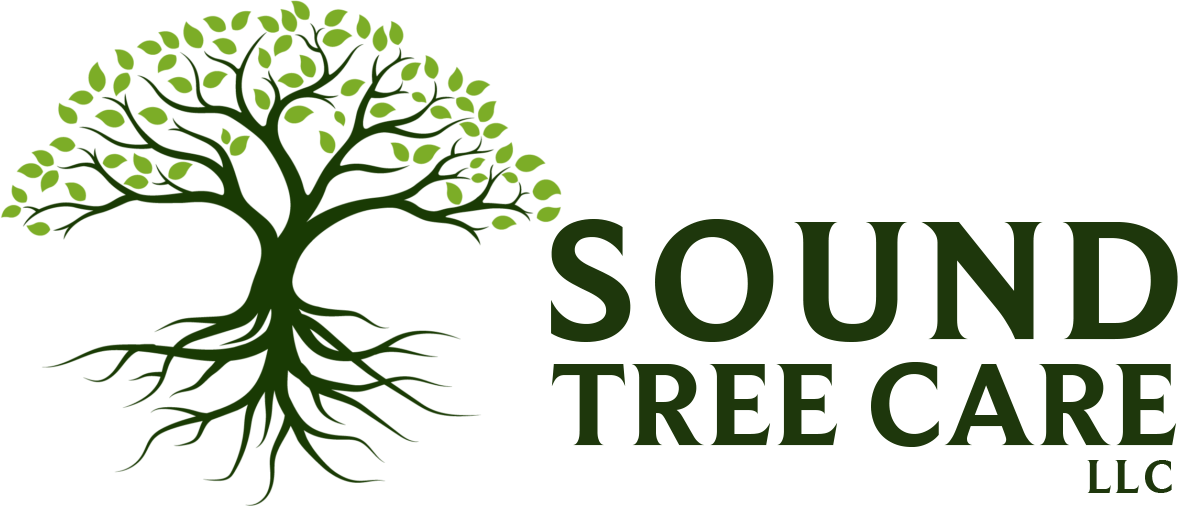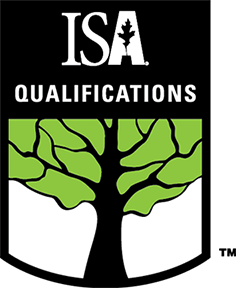Trimming And Pruning Shrubs And Bushes
Written By: Eric Ledford
ISA Certified Arborist – PN-9290A
ISA Qualified Tree Risk Assessor (TRAQ)
How And When To Trim And Prune Your Shrubs And Bushes
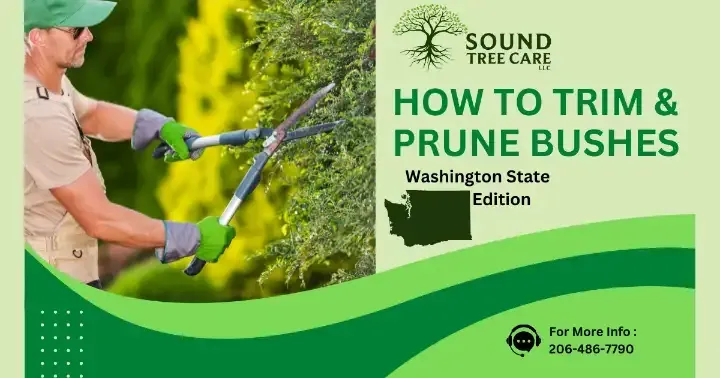
Whether you want to get that unruly shrub under control or encourage your bush to flower, knowing the how and when of correct pruning for your particular plants is essential.
Before clipping away, arm yourself with this helpful guide on what you should and shouldn't do when trimming or pruning a bush or shrub.
When done correctly, seasonal pruning and trimming shrubs,
hedges, and shrubs encourages healthy growth, keeps them in shape, and increases flower and fruit production.
Pruning vs. Trimming: What's The Difference?
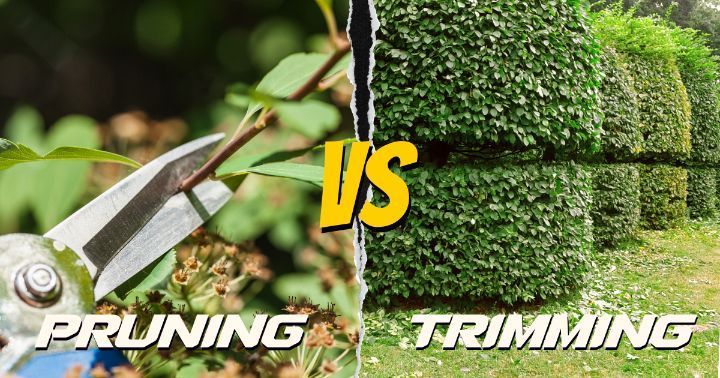
The terms "bush pruning" and "bush trimming" are both techniques used to maintain the health, shape and size of bushes, hedges or shrubs. These two terms are often used interchangable, however there is a clear difference: pruning is the removal of unnecessary or dead branches while trimming is the removal of overgrown branches.
What Is Bush Pruning?
Many people think that pruning and trimming are the same, but the services are actually performed at completely different times of the year. Plus, different equipment is used. Pruning is a service in which unnecessary branches are removed because they're dead, diseased, damaged, or growing in the direction of electrical wires or other structures that the property owner or the city wants to be preserved.
Most often, shears of some sort, typically lopping shears or hand shears, are used to remove thin branches. If there's a particularly thick branch, a saw might be necessary. The winter or early spring is often when hedges are pruned because the plant is dormant at this time of the year. While hedge pruning often has aesthetic benefits, the primary purpose of pruning is to promote the health of the plant.
What Is Bush Trimming?
When you trim a bush, the purpose is to remove the growth that the shrub doesn't actually need so that the shrub can grow in a more healthy way. Trimming certain branches on a bush helps it direct energy to the limbs that you want to grow because it no longer is spending that energy on the branches that you cut off. When you remove green shoots during a hedge trimming, the hedge will be able to grow more full, which often creates a more aesthetically appealing appearance.
For shrub trimming, shears, trimmers, and saws are typically used, and this process is usually done twice per year. For instance, you'll often trim a bush in the middle of spring when the flowers begin to bloom because this is an ideal time to get properties ready for the coming summer. But you might also need to have your hedges trimmed at another point during the summer as the bush grows so that you can maintain the aesthetic appearance.
While there are some health benefits to trimming a bush, such as the prevention of disease, the primary purpose of hedge trimming is to make the bush more aesthetically pleasing.
When Should I Prune My Shrubs And Bushes?
The first step in proper pruning is to know what kind of plants you have and their growth patterns.
Ask your local green thumbs, nursery, tree service, or landscaper to help you identify the types of shrubs, bushes, and flowering plants you have and the best time to prune and trim them.
When Is The Best Time To Prune My Flowering Plants?
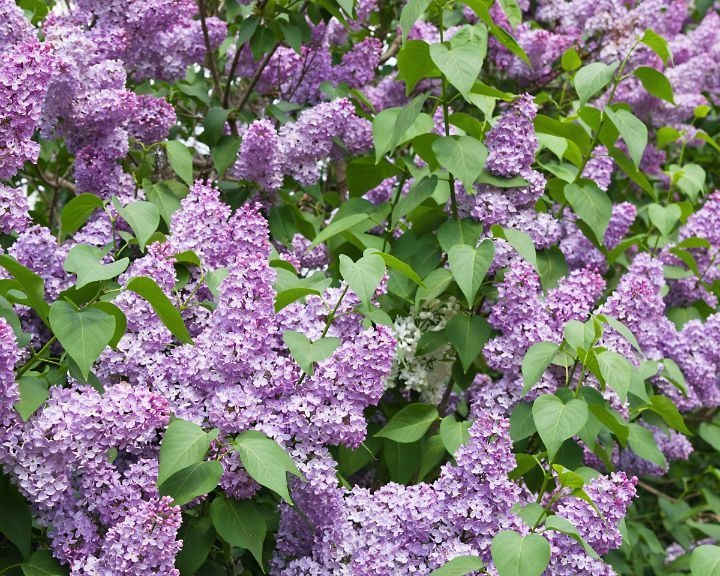
A good rule of thumb for pruning flowering shrubs, trees, and bushes is to wait until after they bloom. Identifying dead sections and pruning without destroying the flowers when the plant is blooming will be easy. If you prune too early or late, you risk cutting off buds and flower-producing wood.
Cut away dead branches and overgrowth immediately after blooming to remove overgrowth and control its shape. This way, you won’t inadvertently remove buds or stimulate growth too late in the season. It also encourages flower production the following year.
Early-Spring bloomers like lilac, rhododendron, and azalea produce flowers on wood grown the previous year and should be pruned in late spring after flowering. If you prune them later or in the winter, you risk cutting off flower buds, decreasing blooming the following spring.
Late bloomers like Hydrangea produce flowers on old wood and should be pruned before midsummer after blooming. Some newer Hydrangea variations bloom on old and new wood, so timing is less critical. Flowering plants that bloom on new wood can be trimmed whenever they are not in bloom.
Summer bloomers like rose bushes and crepe myrtle develop buds in late spring and early summer. Prune summer and late flowering shrubs and trees during late winter or early spring dormancy to promote flower production.
PRO TIP: To keep your spring flowering shrubs and bushes blooming vigorously, trim the oldest shoots down to the stem. Doing so allows younger branches to flourish and bloom.
When should I prune non-flowering shrubs?
Non-flowering trees and shrubs should be pruned when dormant (during the winter). You can trim away any suckers after the leaves have come in but don’t trim the rest of the plant, as new leaves cannot replenish the energy required to heal the cuts, which leaves your bushes susceptible to pests and
disease.
When should I trim fruit trees?
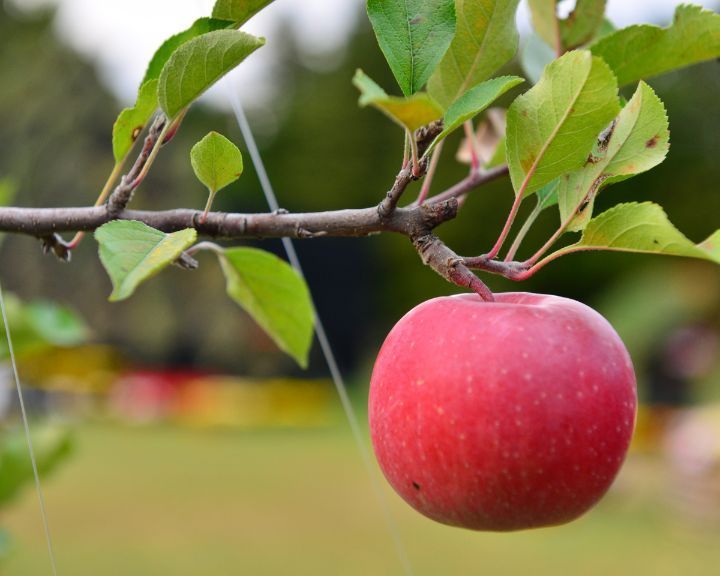
Like non-flowering bushes and trees, fruit trees should be pruned while dormant. Thoughtful pruning for structure and fruit production is best carried out by a tree service with knowledge and experience maintaining fruit trees.
Read
How To Prune Fruit Trees For Better Fruit Production for more detailed information on pruning fruit trees.
Do I need to prune conifers?
Generally, you don’t need to prune coniferous
(needled evergreens) shrubs or hedges. If you need to prune them, do it in
early spring to early summer. When and how you trim conifers depends on the type.
To control the growth of pine, spruce, and fir trees,
pinch off
the new needles before they harden.
Arborvitae, juniper, false cypress, and yew shrubs and
hedges can sprout from old wood and new growth. To keep them under control, pinch new growth off or prune twigs back to the branch or stem.
What tools should I use?
Using the correct tools for the type and size of branches you need to cut ensures your safety and that you don’t damage the tree or shrub.
Generally speaking, pruning equipment that cuts clean works best for cutting greenwood (healthy branches), and tools that crush work well on dead branches and limbs.
Pruning Shears:
handheld and scissor like, pruning shears effectively cut away branches and stems less than ½ inch in diameter.
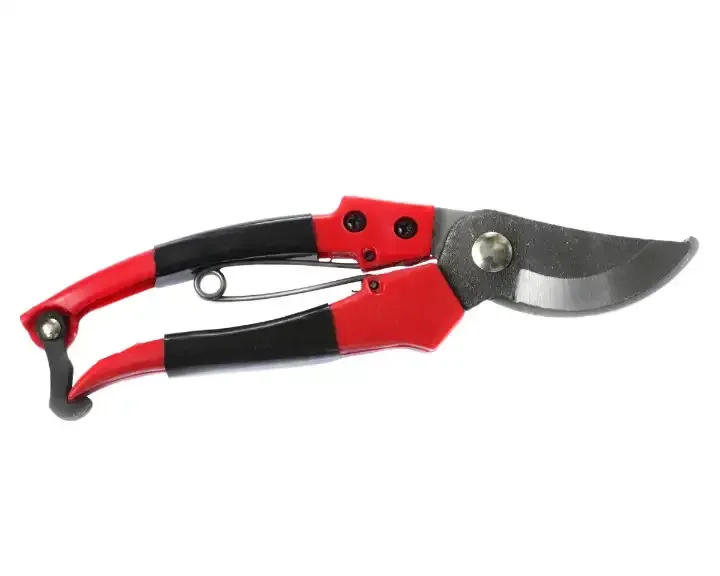
Loppers: two-handed tools with long handles and sharp blades. Loppers can cleanly cut branches up to about 2 inches in diameter.
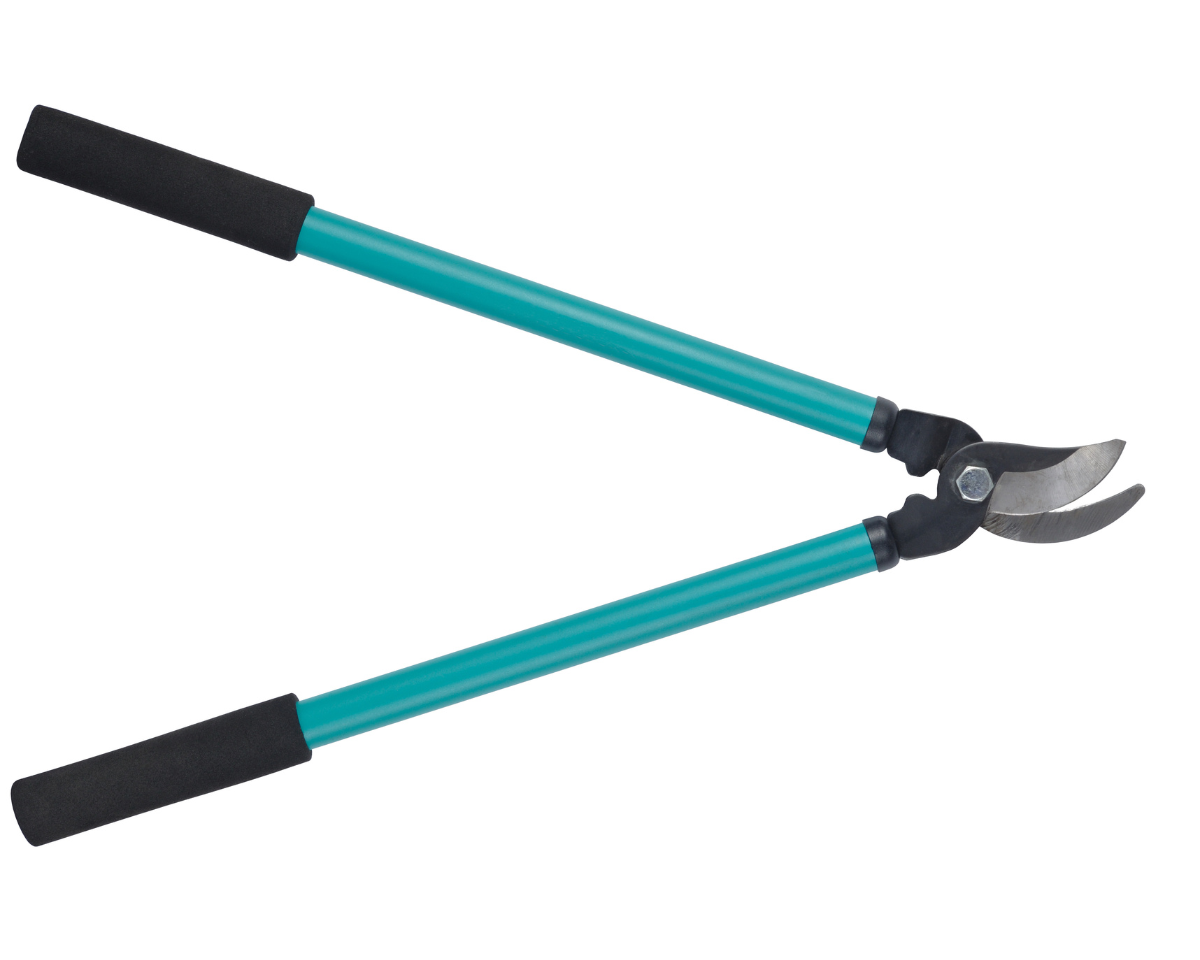
Saws: Pruning saws can be hand or power-operated and are used for cutting branches and stems thicker than 2 inches in diameter. For larger bushes and trees, a chainsaw may be required to remove some branches like sails and leaders.
Be sure to follow all safety precautions when operating a chainsaw or power-operated (electric, battery, or fuel) saw to trim your shrubs or bushes.
In addition,
2 types of cutting mechanisms are used when pruning with shears and loppers.
Bypass:
features 2 blades that bypass each other to create a clean cut. This pruning tool is perfect for cutting live or greenwood but shouldn’t be used to remove dry, dead branches.
Anvil: Anvil shears crush using a blade on one side and a solid base (anvil) on the other. This type of pruning tool is
effective for removing deadwood.
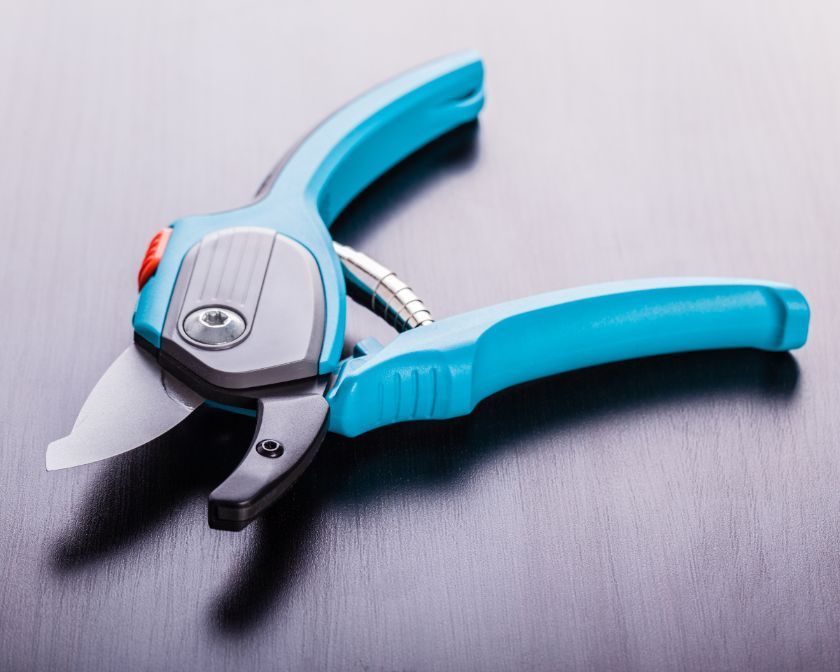
When should I remove dead, broken, or dying branches?
Dead and dying branches can fall and break off during heavy winds and Seattle storms and should be removed immediately.
Inspect your trees and bushes regularly (especially after storms) for broken, dead, and damaged branches that could pose a safety hazard. Cut them off at a
45-degree angle as close to the stem (trunk) as possible to encourage quick healing.
Not only do dead,
broken, and dying limbs pose a safety risk that can damage property or injure people and pets, but they threaten the health of your bushes and shrubs. The wounds
leave your plants vulnerable to insects and disease, and healing those areas requires energy that would otherwise be spent on leaf, flower, and fruit production.
Where should I make the cuts?
If you remove dead sections of a branch but don’t want to remove the entire branch to encourage bushy growth (heading), cut at a 45-degree angle just above a growth nub (it looks like a joint), blossom, or bud.
When thinning out the interior to improve air circulation and light penetration for your bushes, remove every 3rd or 4th branch evenly around the stem. Cut at a
45-degree angle as close to the stem (trunk) as possible. This will make it easier for the tree to close and heal the wound, which will help prevent infestations and disease.
Never cut limbs that require you to raise your tool above shoulder height. Use scaffolding or a ladder. If you cannot cut tall branches safely, call a professional.
How do I remove heavy branches?
When removing large sail limbs and lead branches from a large tree or bush, apply the
3-cut rule to minimize the risk of tearing or damaging the bark or trunk of the tree.
- Cut the bottom of the branch. Cut upwards into the branch to about halfway through the branch.
- Cut downward from the branch's top to halfway further away from the trunk than your first cut.
- Make your final downward cut as close to the trunk as possible while leaving the collar intact.
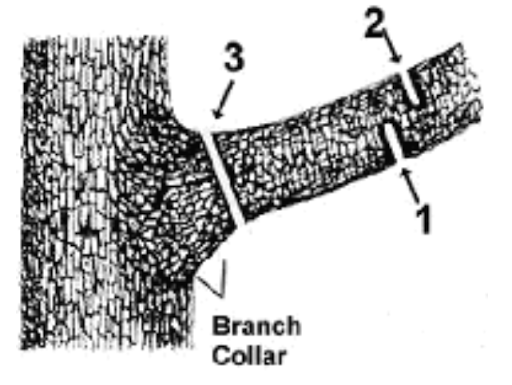
How much can I remove?
As with any trimming and pruning you do, never cut away more than 1/3 of the shrub or bush's wood or growth in a given year.
When cutting back an overgrown hedge, shrub, fruit tree, or bush, cut 1/3 this season, 1/3 the following year, and repeat this until you reach the desired shape and size (the 1/3 Rule).
Can improper trimming kill my shrubs or bushes?
Yes. Pruning your bushes and shrubs incorrectly or at the wrong time can leave your plants weak and vulnerable to infestation and disease. If unsure, have a professional provide you with a pruning service. A tree care specialist or trusted landscaping company has the knowledge, tools, and expertise to trim your bushes and shrubs for optimal health and leaf, fruit, or flower production.
When should I call a professional to prune my shrubs and bushes?
You don’t feel comfortable pruning your plants.
If done incorrectly, you can do more harm than good when pruning your plants. If you are at all unsure of how to
prune your shrubs and bushes, have a professional landscaper or tree service near you provide you with tree trimming.
For a list of registered tree services in Seattle, click here.
Your hedge, bush, or shrub is tall.
Hire a professional if your hedge, bushes, or shrubs are too tall to prune and trim safely from the ground; handling tools while on a ladder or above shoulder height is dangerous. Professional tree trimmers have the equipment and safety training to prune and trim tall trees and bushes.
You see signs of pest infestation or disease.
Contact your local arborist to inspect your plants if you notice signs of pests or disease.
The Washington Invasive Species Control aims to prevent and control invasive species from harming our plants and forests. You can learn what pests to watch for and what to do if you suspect pests are destroying your shrubs, trees, or bushes on their website at https://invasivespecies.wa.gov/invasive-species/.
Your local arborist or Department of Agriculture can help you identify what is harming your plants and what to do.
Branches are close to utility lines or on the right-of-way.
Call your municipality if you need to cut branches close to power or utility lines. They will prune away those branches for free.
Hire a professional tree trimming company to take care of trees or bushes in a location where you risk damaging property or obstructing pedestrian traffic.
Your municipality or city requires that you use a registered tree service to prune or cut your trees.
Many cities and municipalities require residents to use tree companies that are registered with the municipality when having trees maintained. Using a city-approve tree service ensures that they will adhere to government forestry management guidelines and protects you from potential penalties and fines.
Check with your city or municipality before having any tree work done, no matter how minor, to find out if you need permits or have to hire an approved tree care company to complete the work.
Sound Tree Care is a Seattle registered tree care company serving SeaTac, Seattle, and the surrounding Washington area. Our licensed and insured team has the skill and equipment to safely prune and trim your bushes, shrubs, trees, and hedges. With an arborist on staff, we can identify signs of infestation and disease and take measures to help your trees. Our tree care specialists can teach you about the plants you have and how best to care for them. Talk to us about your shrubs and bushes today.
